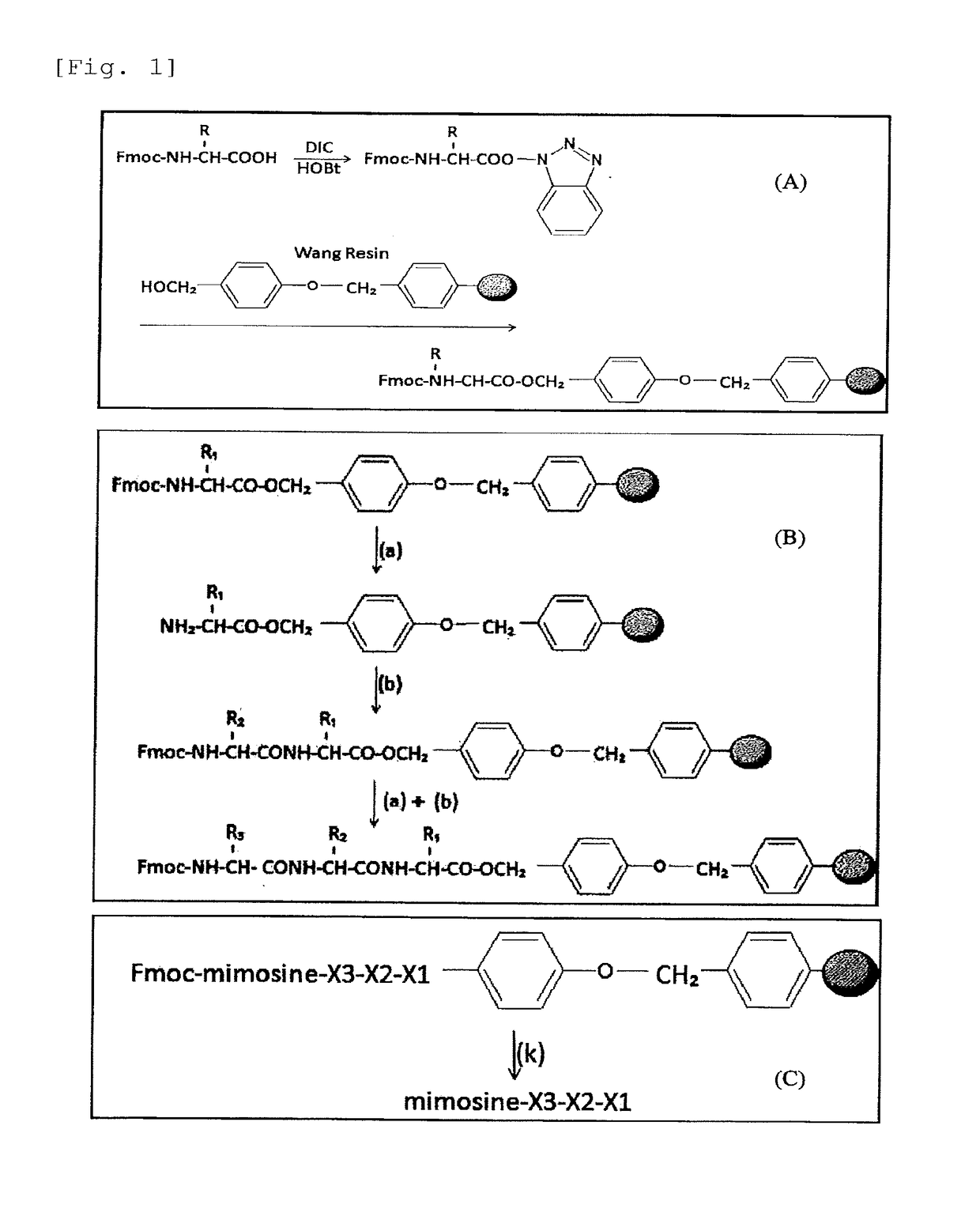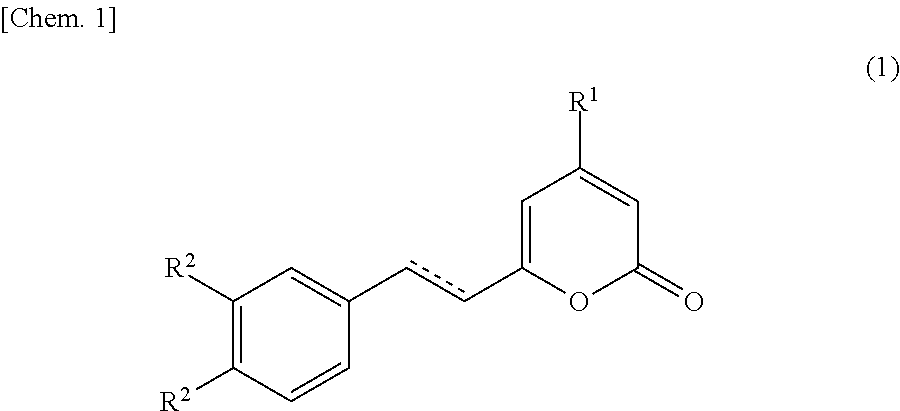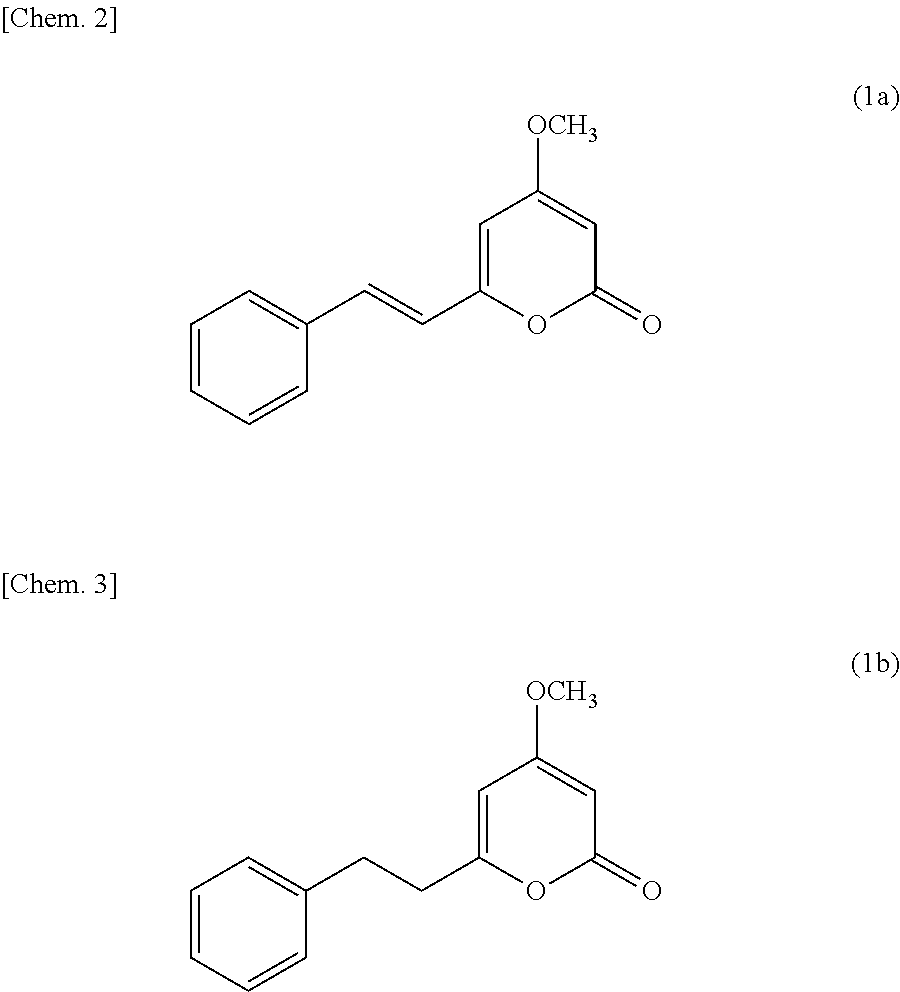P21-activated kinase inhibitor
- Summary
- Abstract
- Description
- Claims
- Application Information
AI Technical Summary
Benefits of technology
Problems solved by technology
Method used
Image
Examples
examples
[0055]The present invention will be explained more specifically by the following examples which are not intended to limit the invention.
preparation 1
Preparation of DK and DDK:
[0056]Shell ginger (Alpinia zerumbet) was harvested on the campus at Okinawa University (1, Senbaru, Nishihara-cho, Nakagami-gun, Okinawa) To 2 kg of shell ginger was added 10 L of water, and the mixture was boiled for about 20 minutes. The extract was cooled at room temperature and filtered under suction (made by AS ONE Co., Shaking Baths SB-20). The filtrate was concentrated to 1 L in vacuo at 40° C., and extracted with hexane (3×500 mL). The organic layer was evaporated to dryness in vacuo. The crude extract after drying was boiled in water and filtered. The residue was separated and purified on HPLC to give DK. The filtrate was cooled to 4° C. to yield crystals, which were separated and purified by HPLC to give DDK. In the purification of DK and DDK, gradient elution was employed using 0.1% aqueous acetic acid solution (Solvent A) and 0.1% acetic acid-methanol solution (Solvent B) as a mobile phase. The gradient elution was conducted in the condition of...
preparation 2
Preparation of Hispidin Derivatives (H1-3)
[0057]Hispidin (3 mg) was dissolved in 0.6 ml of a mixture of methanol and CH2Cl2 (1:5). This solution was cooled to 0° C., to which was added 0.5 ml of diazomethane / CH2Cl2 solution. The mixture was allowed to stand at 4° C. overnight. Solvent was distilled off, and the residue was purified by PTLC to give light yellow powder (2 mg, 67% yield). The compound H1 (3.5 mg) was dissolved in 0.82 mL of a mixture of MeOH CH2Cl2 (1:1) and stirred for 2 hours in the presence of 10% Pd / C (0.65 mg). The mixture was filtered, and the solvent was evaporated in vacuo. Purification by column chromatography gave the compound H2 as white solid (3 mg, 85%). In the same manner, H3 was prepared from hispidin. The followings indicate the 1H-spectrum data of the resulting hispidin derivatives. In this connection, the data were recorded by JEOL JNM-ECA400 (JEOL, Japan). The chemical shift was indicated by ppm (δ) relating to TMS.
(Hispidin Derivative H1)
[0058]1H NM...
PUM
| Property | Measurement | Unit |
|---|---|---|
| Inhibition | aaaaa | aaaaa |
Abstract
Description
Claims
Application Information
 Login to View More
Login to View More - R&D
- Intellectual Property
- Life Sciences
- Materials
- Tech Scout
- Unparalleled Data Quality
- Higher Quality Content
- 60% Fewer Hallucinations
Browse by: Latest US Patents, China's latest patents, Technical Efficacy Thesaurus, Application Domain, Technology Topic, Popular Technical Reports.
© 2025 PatSnap. All rights reserved.Legal|Privacy policy|Modern Slavery Act Transparency Statement|Sitemap|About US| Contact US: help@patsnap.com



